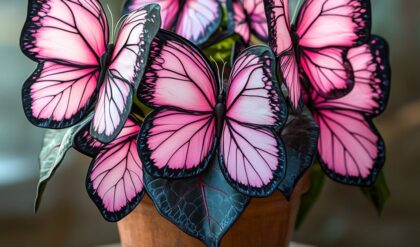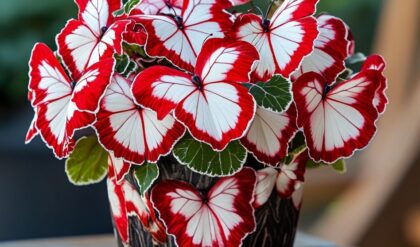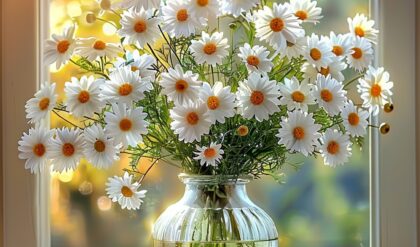The calla lily, with its graceful trumpet-shaped bloom and striking silhouette, has long been a symbol of elegance and beauty in the world of flora. Despite its name, this exquisite flower is not a true lily but belongs to the genus Zantedeschia. Native to the lush wetlands of South Africa, calla lilies have captivated hearts and inspired artists for centuries, earning a prominent place in gardens, floral arrangements, and cultural symbolism worldwide. This article delves into the fascinating world of calla lilies, exploring their rich history, diverse symbolism, and the art of cultivation.

The Origins and Evolution of Calla Lilies
The story of calla lilies begins in the vibrant ecosystems of South Africa, where these stunning plants first emerged and thrived in the warm, humid climate. Their journey from obscurity to global recognition is a testament to their undeniable allure and adaptability.
The Natural Habitat of Calla Lilies
Calla lilies are native to the southern regions of Africa, particularly South Africa, Lesotho, and Swaziland. These areas are characterized by their diverse landscapes, ranging from coastal marshes to mountain streams. The natural habitat of calla lilies is typically found in wetlands, swamps, and along riverbanks, where they have evolved to thrive in moist, nutrient-rich soils.
In their native environment, calla lilies play a crucial role in the ecosystem. Their large leaves provide shelter for small aquatic creatures, while their roots help stabilize the soil along waterways. The flowers attract various pollinators, contributing to the biodiversity of their habitats.
The adaptations that allow calla lilies to flourish in these environments are remarkable. Their rhizomes, or underground stems, store nutrients and water, enabling the plants to survive periods of drought. The waxy coating on their leaves helps regulate moisture loss, a critical feature in the sometimes harsh African climate.
Discovery and Introduction to the Western World
The discovery of calla lilies by Western botanists is a fascinating chapter in the flower’s history. It was during the era of European exploration and colonization of Africa that these elegant plants first caught the attention of plant enthusiasts and scientists.
In the late 17th century, European botanists began documenting the diverse flora of South Africa. The calla lily, with its distinctive form and pristine white blooms, quickly became a subject of interest. Early botanical illustrations of the flower captured its unique characteristics, sparking curiosity among horticulturists back in Europe.
The first calla lilies were likely brought to Europe in the early 18th century. They were initially grown in botanical gardens and private collections of wealthy plant enthusiasts. The flower’s exotic origins and striking appearance made it a prized possession, symbolizing the allure of distant lands and the wonders of nature.

Botanical Classification and Naming
The scientific classification of calla lilies has an interesting history. Initially, they were classified under the genus Calla, which is where their common name originates. However, further study revealed significant differences between true Calla plants and what we now know as calla lilies.
In 1826, German botanist Kurt Sprengel reclassified these plants into a new genus, Zantedeschia, named in honor of Italian botanist Giovanni Zantedeschi. This reclassification reflects the unique characteristics of calla lilies that set them apart from other members of the Araceae family.
Despite this botanical reclassification, the common name “calla lily” has persisted, a testament to the flower’s enduring popularity and the power of tradition in naming conventions.
Cultivation and Hybridization
As calla lilies gained popularity in Europe and beyond, horticulturists began experimenting with cultivation techniques and breeding programs. The goal was to develop varieties that could thrive in different climates and to create new color variations beyond the classic white.
The 19th and 20th centuries saw significant advancements in calla lily cultivation. Hybridizers worked to create varieties with improved cold tolerance, allowing the plants to be grown in regions with cooler climates. They also focused on developing compact varieties suitable for container gardening, expanding the possibilities for growing calla lilies in urban environments.
Perhaps the most striking achievement in calla lily hybridization has been the development of a wide range of colors. From the original white, breeders have produced varieties in shades of pink, purple, yellow, orange, and even near-black. These color variations have greatly expanded the use of calla lilies in floral design and gardening, allowing for more diverse and creative applications.
Symbolism and Cultural Significance of Calla Lilies
Throughout history, calla lilies have been imbued with rich symbolism and cultural significance. Their elegant form and pure beauty have inspired countless interpretations across different cultures and time periods.
Calla Lilies in Ancient Mythology
The beauty of calla lilies has not gone unnoticed in ancient mythologies. Although not native to the regions where many ancient civilizations flourished, similar flowers often inspired myths that can be associated with the elegance of calla lilies.
In Greek mythology, the goddess Hera, wife of Zeus, was said to be associated with lilies. According to one legend, lilies sprang from drops of her milk that fell to earth, symbolizing divine beauty and motherhood. While this myth doesn’t specifically mention calla lilies, the association of lilies with divine feminine beauty has influenced the symbolism of calla lilies in Western culture.
Egyptian mythology also revered flowers resembling lilies. The blue lotus, often depicted in ancient Egyptian art, shares some symbolic similarities with calla lilies, representing rebirth and purity. This connection to rebirth and renewal has carried over to modern interpretations of calla lily symbolism.
Victorian Language of Flowers
In the Victorian era, flowers were ascribed specific meanings, creating a complex language of floral symbolism. This “language of flowers,” or floriography, became a popular means of conveying messages and emotions through carefully selected bouquets.
In this Victorian flower language, calla lilies held a special place. They were primarily associated with purity and innocence, making them a popular choice for bridal bouquets and religious ceremonies. The pristine white of the classic calla lily perfectly embodied these virtues in the eyes of Victorian society.
Beyond purity, calla lilies also came to symbolize magnificence and beauty. Their elegant form and the way they stand tall and proud made them a representation of confidence and strength, particularly feminine strength and grace.

Religious Symbolism
Calla lilies have found their way into religious symbolism, particularly in Christianity. While not mentioned specifically in biblical texts, they have been adopted as symbols in Christian art and traditions.
In Christian iconography, the calla lily is often associated with the Virgin Mary, representing her purity and divine grace. The trumpet-like shape of the flower has been likened to Gabriel’s trumpet, connecting it to the Annunciation.
During Easter celebrations, calla lilies frequently adorn church altars. Their white color and the timing of their natural blooming season in many regions have made them a symbol of resurrection and rebirth, aligning with the Easter message.
Calla Lilies in Art and Literature
The striking beauty of calla lilies has made them a favorite subject for artists and writers throughout history. Their simple yet elegant form provides a perfect subject for exploring shape, light, and symbolism in various artistic mediums.
In painting, calla lilies have been immortalized by numerous artists. Georgia O’Keeffe, the renowned American modernist painter, is perhaps most famously associated with calla lily paintings. Her large-scale, close-up depictions of calla lilies explored the flower’s sensual curves and subtle gradations of color, elevating the flower to an iconic status in 20th-century art.
Photographers have also been drawn to the calla lily’s photogenic qualities. The flower’s symmetrical form and the interplay of light and shadow on its curved surfaces make it an ideal subject for both classic and experimental photography.
In literature, calla lilies often appear as symbols of purity, death, or rebirth. Their presence in poetry and prose can evoke themes of innocence, the fleeting nature of beauty, or the cycle of life and death.
Cultivation and Care of Calla Lilies
Calla lilies, with their elegant blooms and lush foliage, are a favorite among gardeners and floral enthusiasts. While they have a reputation for being somewhat finicky, understanding their needs can lead to successful cultivation and vibrant, healthy plants.
Optimal Growing Conditions
Creating the right environment is crucial for thriving calla lilies. These plants have specific preferences when it comes to soil, light, and moisture.

Soil requirements for calla lilies are quite particular. They thrive in rich, well-draining soil with a slightly acidic to neutral pH (around 6.0 to 6.5). The soil should be loose and fertile, allowing for easy root growth and good water retention without becoming waterlogged. Adding organic matter such as compost or well-rotted manure can improve soil structure and fertility.
Light conditions play a significant role in the growth and blooming of calla lilies. In their natural habitat, they often grow in areas with dappled sunlight. In cultivation, they prefer bright, indirect light. Full sun can be tolerated in cooler climates, but in warmer regions, some afternoon shade is beneficial to prevent leaf scorch.
Temperature and humidity are also important factors. Calla lilies are native to warm, humid environments and grow best in temperatures between 60°F and 80°F (15°C to 27°C). They appreciate high humidity, which can be achieved in drier climates by misting the leaves or placing the pots on trays filled with pebbles and water.
Planting and Propagation Techniques
Successful cultivation of calla lilies begins with proper planting techniques. Whether you’re growing them in the garden or in containers, following the right procedures can ensure healthy growth and abundant blooms.
For garden planting, choose a location that meets the light and soil requirements discussed earlier. Plant the rhizomes about 4 inches deep and 12-18 inches apart, with the growing tips facing upward. The best time to plant is in the spring after all danger of frost has passed.
Container growing is an excellent option for calla lilies, especially in regions where they’re not winter hardy. Choose a pot with good drainage holes and use a high-quality potting mix. Plant the rhizomes at the same depth as you would in the garden, but you can space them a bit closer together in containers.
Propagation of calla lilies is typically done through division of the rhizomes. This is best done in the fall after the foliage has died back. Carefully dig up the rhizomes, separate them into sections ensuring each has at least one eye (growing point), and replant immediately or store for winter in a cool, dry place.
Watering and Fertilization
Proper watering is crucial for calla lilies. They love moisture but are susceptible to root rot if overwatered. The key is to keep the soil consistently moist but not waterlogged. Water deeply when the top inch of soil feels dry to the touch.
During the active growing season, calla lilies benefit from regular fertilization. Use a balanced, water-soluble fertilizer every 2-3 weeks. Be cautious not to over-fertilize, as this can lead to lush foliage growth at the expense of flowers.
Common Pests and Diseases
While generally hardy, calla lilies can fall victim to certain pests and diseases. Being aware of these potential issues and knowing how to address them is crucial for maintaining healthy plants.
Aphids and spider mites are common pests that can infest calla lilies. These tiny insects feed on plant sap, causing distorted growth and weakening the plant. Regular inspection and treatment with insecticidal soap or neem oil can help control these pests.
Root rot is a significant concern, especially in poorly draining soils. This fungal disease can quickly kill calla lilies. Prevention through proper drainage and careful watering is the best approach. If root rot occurs, remove affected parts and replant in fresh, well-draining soil.
Bacterial soft rot can also affect calla lilies, causing the rhizomes to become soft and mushy. This is often a result of overly wet conditions. Proper spacing to improve air circulation and avoiding overhead watering can help prevent this issue.
Calla Lilies in Modern Horticulture and Design
In recent years, calla lilies have experienced a renaissance in popularity, finding new applications in modern horticulture and design. Their versatility and elegant form make them a favorite among florists, landscapers, and interior designers alike.
Calla Lilies in Floral Design
The use of calla lilies in floral arrangements has evolved significantly. While they have long been a staple in bridal bouquets, modern florists are finding innovative ways to incorporate these elegant blooms into a wide range of designs.
In contemporary floral arrangements, calla lilies are often used as focal points. Their strong, sculptural form allows them to stand out even in complex designs. Florists appreciate the way calla lilies can add a touch of sophistication to both minimalist and elaborate arrangements.
The variety of colors now available in calla lilies has expanded their use in color-themed designs. From classic white for weddings to deep purples and blacks for more dramatic arrangements, calla lilies offer a wide palette for creative expression.
Calla lilies are also popular in event decor. Their long-lasting nature when cut makes them ideal for large-scale installations at weddings, corporate events, and other special occasions. Tall vases filled with calla lilies create striking centerpieces that command attention without overwhelming the space.
Landscaping with Calla Lilies
In landscape design, calla lilies offer unique opportunities to add elegance and structure to garden spaces. Their bold leaves and distinctive flowers make them excellent choices for creating visual interest in various garden styles.
In formal garden designs, calla lilies can be used to create clean lines and geometric patterns. Their upright growth habit makes them perfect for edging paths or creating borders. In more naturalistic garden designs, calla lilies can be planted in drifts or clusters to mimic their growth in the wild, creating a lush, tropical feel.
Water features and pond edges are natural spots for calla lilies, echoing their native habitat. They can be planted directly in shallow water or in boggy areas around ponds, adding vertical interest and color to these often-overlooked spaces.
Container gardening with calla lilies has gained popularity, especially in urban settings. Their compact growth and striking appearance make them ideal for patios, balconies, and small garden spaces. Mixed containers featuring calla lilies as the “thriller” component, combined with trailing plants and fillers, create eye-catching displays.
Calla Lilies in Interior Design
The influence of calla lilies extends beyond the garden and into interior spaces. Their sleek, modern look makes them a favorite among interior designers looking to bring a touch of nature indoors.
As cut flowers, calla lilies are often used in minimalist floral displays in modern interiors. A single stem in a simple vase can create a striking focal point in a room. Their longevity as cut flowers means they can provide lasting beauty in home and office settings.
The form of calla lilies has inspired various design elements in interior decor. From lighting fixtures that mimic the shape of calla lily blooms to artwork and textiles featuring calla lily motifs, these flowers have left their mark on contemporary design aesthetics.
Calla Lilies in the Cut Flower Industry
The cut flower industry has embraced calla lilies, recognizing their appeal to consumers and their excellent vase life. Advances in cultivation and transportation have made it possible to enjoy calla lilies year-round in many parts of the world.
Commercial growers have developed techniques to produce calla lilies with longer stems and more consistent blooms, meeting the demands of the floral industry. The introduction of new colors and varieties has expanded the market for calla lilies, making them a versatile choice for florists catering to diverse customer preferences.
Sustainable growing practices are becoming increasingly important in the cut flower industry, and calla lily production is no exception. Many growers are adopting environmentally friendly methods, such as integrated pest management and water-conserving irrigation systems, to produce these beloved flowers responsibly.
Conclusion
Calla lilies, with their timeless elegance and rich symbolism, continue to captivate and inspire. From their humble origins in the wetlands of South Africa to their current status as a global horticultural treasure, these remarkable flowers have woven themselves into the fabric of human culture and design. Whether gracing a bridal bouquet, adding sophistication to a garden, or serving as a muse for artists and designers, calla lilies remain a testament to the enduring power of natural beauty. As we continue to cultivate and appreciate these elegant blooms, we honor not just a flower, but a legacy of grace, purity, and the timeless allure of the natural world.



